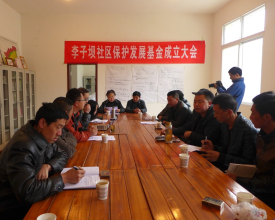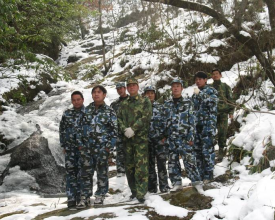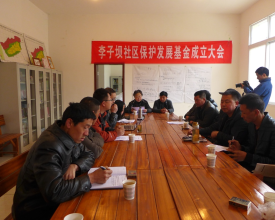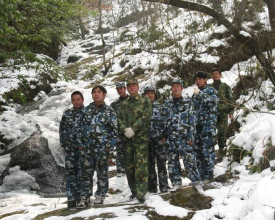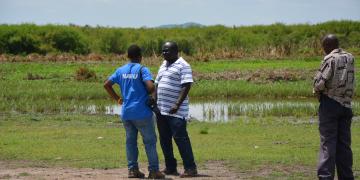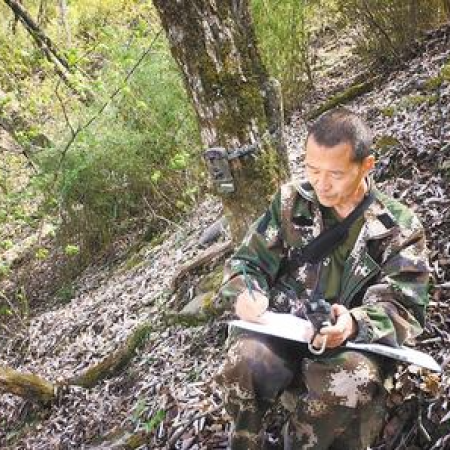
Case study of collective forest management in Baishuijiang National Nature Reserve, Gansu Province -- a case study of collective

Liziba Village has abundant natural resources and a good ecological environment, but excessive logging, illegal medicinal plant collection, and poaching have caused losses to villagers' lives. In 2003, with the support of the Gansu Baishuijiang National Nature Reserve Administration and the local village committee, villagers spontaneously formed a forest protection team to expel illegal loggers and poachers and to educate and supervise fellow villagers. After the introduction of conservation agreements in 2007, illegal activities decreased and the ecological environment improved. The promotion of tea industry technologies and mechanized management increased tea farmers' income. Villagers shifted from traditional forest-dependent livelihoods to diversified development, becoming protectors and managers of forest resources. This transformation boosted the community economy and living standards, and promoted harmonious coexistence between humans and nature.
Contexte
Challenges addressed
Over the years, the residents of Liziba Community have continuously innovated the management and protection model for collective forests under the Natural Forest Protection Program (NFPP). This has effectively motivated the villagers and led to the continuous strengthening of protection measures. As a result, the forest area of both state-owned and collective forests under the NFPP has increased, and the forest stand quality has significantly improved. This has achieved a dual increase in forest area and volume, with remarkable ecological benefits.Illegal logging, poaching, and deforestation have been effectively controlled, and there has been a noticeable improvement in natural resources and the ecological environment. Based on the forest protection area and population conditions of each village, a combined protection approach of community-wide participation and professional management has been implemented. This approach highlights the key points of protection and promotes harmonious coexistence between humans and nature.
Emplacement
Traiter
Summary of the process
The community forest protection teams are stationed at the very edge of the protected areas. They need to receive training and capacity-building to acquire knowledge, understand and respect nature, and care for the environment. This will enable them to inspire others to join these efforts. In addition, strong support from local government departments is essential to increase the income of local residents and maximize the protection of forest resources, thereby achieving widespread participation in harmonious coexistence with nature.
Building Blocks
The villagers of Liziba have spontaneously formed a forest protection team to participate in the conservation of forest resources, in order to inspire more people to join the work of forest resource protection.
The forest resource conservation in Liziba faces many challenges in various aspects, which hinder the active participation of local residents in the protection of natural resources and the sustainability of the environment. These challenges include illegal logging, theft of timber, illegal purchase of wood, poaching of wild animals, and deforestation for farming. In addition, traditional living habits that rely entirely on forest resources, such as building houses and meeting basic needs like heating and cooking, also cause destruction to forest resources and ecosystems.
Enabling factors
We collaborate with local forest protection teams, local governments, forest public security departments, and other relevant units. We also meet with the person in charge of each party. The purpose is to work closely with the local forest protection teams to jointly protect the local forest resources. In this process, we ensure that the local forest protection teams receive support from the government and relevant units. This way, the local forest protection teams and the public feel that they are an important part of the solution and are willing to voluntarily participate in these forest resource protection efforts.
Lesson learned
Public participation in the protection of natural resources is an effective way to address local resource destruction. It makes people feel that they are an important part of the solution and enables them to play a greater leadership role in the protection of forest resources. This can fundamentally change their previous mindset and lead them towards sustainable development, thereby promoting harmonious coexistence between humans and nature.
Engage them and transform them from perpetrators of illegal activities such as timber theft, deforestation for farming, and overharvesting that destroy forest resources into the primary managers of the Natural Forest Conservation Program (NFCP) collective forests. This will drive local economic development and ensure the effective protection of forest resources.
Continuously provide agricultural and forestry technology training for farmers in Liziba, encourage and guide villagers to establish characteristic agricultural and forestry cooperatives
Based on the local natural resource conditions, Liziba Village vigorously develops economic forest industries such as walnuts and chestnuts, cultivates and processes tea, fungus, and edible mushrooms, cultivates traditional Chinese medicinal materials such as Tianma and Chonglou, and engages in beekeeping and chicken farming. Some farmers in Liziba Village spontaneously formed a tea cooperative, registered their own tea brand, and built an online trading platform through e-commerce, promoting the vigorous development of the green economy. Targeted training was provided to village level management and maintenance personnel on fund management, mountain patrol and maintenance, responsibility implementation, safety education, etc., to enhance the villagers' ability and level of independent management and maintenance.
Enabling factors
Collaborate with local governments and organizations to promote community participation
Organize training to enhance villagers' ability and level of self-management and protection
Continuous guidance and follow-up support have achieved long-term imaging
Strong support from the government and forestry related units
Lesson learned
Through the continuous efforts of the Protection Bureau and the Liziba community over the years, other villages and communities have been guided to innovate the management and protection mode of the Tianbao collective forest, mobilizing the enthusiasm of villagers. The management and protection measures have been continuously strengthened, resulting in an increase in the area of Tianbao state-owned forests and collective forests, a significant improvement in forest quality, and a dual growth of forest area and accumulation, with significant ecological benefits. The typical case of Liziba Village has been comprehensively implemented in various villages and communities. The people in the jurisdiction of Liziba have benefited from the management and protection of natural forest resources, changed their mindset, and their awareness of ecological protection has significantly increased. Illegal activities such as illegal logging, illegal transportation of timber, illegal purchase of timber, poaching of wild animals, and deforestation and land reclamation have been controlled. The phenomenon of active and spontaneous protection of forest resources, rescue of wild animals, and community patrols and monitoring has been increasing among the nine communities. The edge forest line of the experimental area has shifted from backward movement in the 1980s and 1990s to forward movement, and natural resources and ecological environment have been significantly improved, fully mobilizing the enthusiasm of villagers to love forests and protect forests.
Impacts
Over years, Liziba community's efforts have guided other villages to innovate Tianbao collective forest management, boosting villager enthusiasm and enhancing protection measures. This has led to increased forest area, improved forest quality, and significant ecological benefits, with Liziba's model being widely implemented.
Currently, a professional forest management team from each village, equipped with professional gear, leads community construction and resource patrol work, playing a key role in Baishuijiang Nature Reserve's conservation efforts.
All 70 administrative villages within the protected area now have their own forest management teams, managing both collective and nearby state-owned forests. Through patrols and protection, they eliminate fire hazards, assist with pest control, and support protected area monitoring and data collection, contributing to more effective conservation strategies.
Beneficiaries
Local Communities
Local Ecosystems
Global Biodiversity Framework (GBF)
Sustainable Development Goals
Story

Jiao Hui, a 52-year-old forest ranger at the Baishuijiang National Nature Reserve, has dedicated 27 years to protecting the area's ecosystem and the habitat of the giant panda. Despite the monotonous and challenging work, he has never regretted his choice. The protected area's complex terrain, with elevations ranging from over 4000 meters to just 500 meters, makes his job extremely difficult. Jiao Hui and his colleagues cover vast areas with long, treacherous patrol routes, often following animal tracks.
In his daily work, Jiao Hui volunteers for the most dangerous monitoring tasks, enduring physical hardships but never complaining. His wilderness survival skills have earned him the nickname "Master Jiao" from younger colleagues. He always carries medical supplies during patrols, which have helped rescue many injured animals, including a young takin calf he once saved.
During fire prevention seasons, Jiao Hui actively promotes fire safety in local communities through various methods. His meticulous approach ensures no area or individual is missed. His serious and responsible attitude has kept his jurisdiction free from forest fires. Jiao Hui's dedication makes him a loyal guardian of nature conservation.

